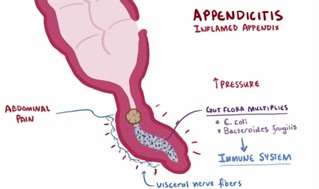Which information will the nurse include when teaching a patient how to avoid chronic constipation? (Select all that apply.)
Walking or cycling frequently will help bowel motility.
Bulk-forming laxatives are an excellent source of fiber.
A good time for bowel movement may be after breakfast.
Some over-the-counter (OTC) medications cause constipation.
Stimulants and saline laxatives can be used regularly.
Correct Answer : A,C,D
Option b is not entirely correct because while bulk-forming laxatives contain fiber, they may not always be the best source of fiber, and their use should be individualized according to the patient's needs.
Option e is incorrect because while stimulants and saline laxatives can be effective for occasional constipation, they should not be used regularly or for an extended period without medical supervision as they can lead to dependence and other complications.

Nursing Test Bank
Naxlex Comprehensive Predictor Exams
Related Questions
Correct Answer is D
Explanation
Diabetes insipidus is a condition in which the body is unable to properly regulate fluid balance, leading to excessive urination (polyuria) and thirst. Therefore, the nurse should anticipate the clinical manifestation of polyuria in a patient admitted to the hospital with diabetes insipidus. The patient may excrete large amounts of dilute urine, which can lead to dehydration if adequate fluid replacement is not provided. The other options listed (fluid volume overload, decreased gas exchange, and generalized edema) are not typically associated with diabetes insipidus, as this condition is characterized by a deficiency of antidiuretic hormone (ADH) rather than an excess of fluid.

Correct Answer is D
Explanation
A decrease in the level of consciousness is a serious sign and could be an indication of worsening conditions. It is essential for the nurse to ensure that the patient's airway is open and clear, as a compromised airway can lead to hypoxia and a further decrease in consciousness. Therefore, maintaining a patent airway should be the nurse's priority action in this situation.
While monitoring blood pressure and restricting oral intake may be important interventions in certain situations, they are not the priority actions in this scenario. Administering SQ insulin may not be necessary for a patient with hypothyroidism and acute appendicitis.


Whether you are a student looking to ace your exams or a practicing nurse seeking to enhance your expertise , our nursing education contents will empower you with the confidence and competence to make a difference in the lives of patients and become a respected leader in the healthcare field.
Visit Naxlex, invest in your future and unlock endless possibilities with our unparalleled nursing education contents today
Report Wrong Answer on the Current Question
Do you disagree with the answer? If yes, what is your expected answer? Explain.
Kindly be descriptive with the issue you are facing.
